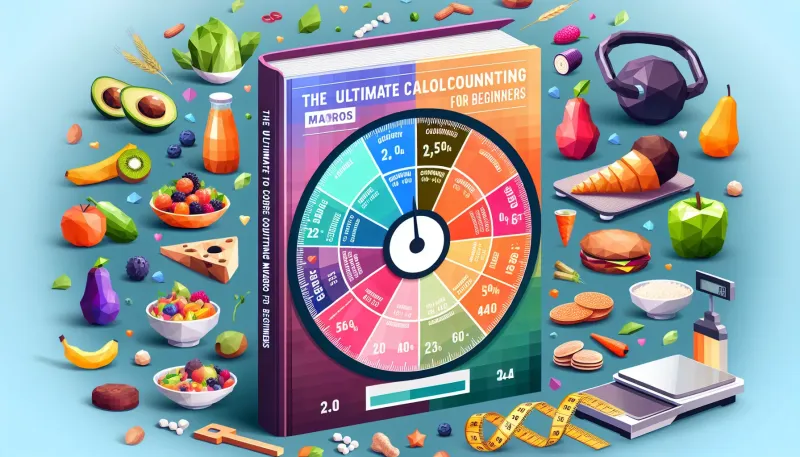The Ultimate Guide to Calorie Counting and Macros for Beginners

Learn everything you need to know about calorie counting and macros for effective weight management and overall health. Perfect for beginners!
Whether you're aiming for weight loss, muscle gain, or simply maintaining a healthy lifestyle, understanding the fundamentals of calorie counting and macros (macronutrients) is essential. This comprehensive guide will walk you through everything you need to know to get started, providing you with valuable tools and insights to achieve your health and fitness goals.
Introduction to Calorie Counting and Macros
Calorie counting and managing macros are common strategies used by individuals to control their dietary intake. But what exactly do these terms mean, and how can they benefit you? Let's start with the basics.
What is Calorie Counting?
Calorie counting involves tracking the number of calories you consume through food and beverages. A calorie is a unit of energy, and our bodies need a certain amount of energy to function. By counting calories, you can ensure you are not consuming more energy than you require, which can lead to weight gain.
Understanding Macros
Macros, or macronutrients, are the three main nutrients that provide energy: carbohydrates, proteins, and fats. Each macronutrient plays a specific role in nourishment and has a different caloric value:
- Carbohydrates: 4 calories per gram
- Proteins: 4 calories per gram
- Fats: 9 calories per gram
Why Track Calories and Macros?
Weight Management
Tracking your calorie intake is crucial for managing your weight. Consuming fewer calories than your body needs can lead to weight loss, while consuming more can result in weight gain. Macros tracking helps to ensure you are eating a balanced diet and meeting your macronutrient needs.
Improved Nutritional Awareness
By paying attention to what you eat, you become more aware of your nutritional choices. This awareness can lead to healthier eating habits and better food choices.
Optimizing Performance
A balanced intake of macros can enhance workout performance and recovery. For instance, proteins are vital for muscle repair, while carbohydrates provide energy for your workouts.
Getting Started with Calorie Counting and Macros
Determine Your Caloric Needs
To begin, calculate your Total Daily Energy Expenditure (TDEE), which is the number of calories your body needs to maintain its current weight. You can use online TDEE calculators that factor in your age, gender, weight, height, and activity level. This will give you a baseline number to work with.
Set Your Goals
Next, define your goals. Do you want to lose weight, gain muscle, or maintain your current weight? Adjust your caloric intake accordingly:
- For weight loss: Consume fewer calories than your TDEE.
- For weight gain: Consume more calories than your TDEE.
- For maintenance: Match your caloric intake to your TDEE.
Calculate Your Macros
Once you know your daily caloric intake, distribute these calories among the three macronutrients. A common starting point is the 40/30/30 rule (40% carbohydrates, 30% protein, and 30% fat). However, this can vary based on individual needs and goals.
Track Your Intake
Use a food diary, app, or online tool to log everything you consume. This will help you stay accountable and monitor your progress. Popular apps include MyFitnessPal, Cronometer, and Lose It!
Tips for Effective Calorie Counting and Macro Management
Be Honest and Accurate
Ensure you are logging everything you consume, including snacks and drinks. Use food scales and measuring cups for precise portion sizes.
Read Labels
Food packaging provides essential information about the macronutrient content and serving sizes. Familiarize yourself with these labels to make informed choices.
Plan Your Meals
Meal planning can help you stay within your caloric and macro targets. Prepare meals in advance to avoid last-minute, less healthy choices.
Stay Flexible
While it's important to stick to your goals, allow some flexibility. Occasional indulgences won't ruin your progress, and it’s better to aim for long-term consistency rather than perfection.
Common Challenges and Solutions
Plateaus in Progress
It's common to hit a plateau where progress stalls. To overcome this, reassess your caloric needs and adjust your intake or alter your workout routine.
Finding the Right Balance
Achieving the correct balance of macros can be a trial and error process. Experiment with different ratios to find what works best for your body and goals.
Managing Social Situations
Dining out or attending social events can make tracking difficult. Look at menus ahead of time and choose dishes that fit your macros. Don’t stress about occasional deviations; focus on overall patterns.
Conclusion
Calorie counting and managing macros can seem daunting at first, but with the right approach and tools, it becomes second nature. Understanding these principles is an effective way to control your diet, reach your health goals, and enhance overall well-being. Remember, consistency and patience are key. Now that you have the knowledge, it's time to put it into practice!



























